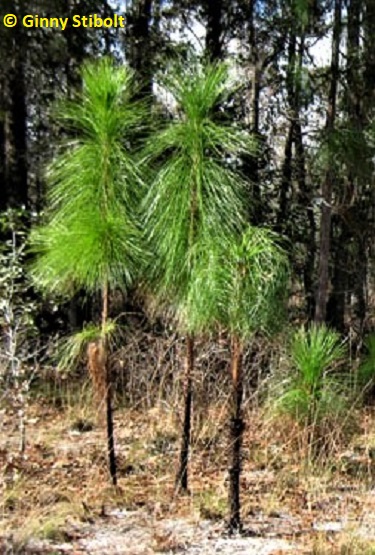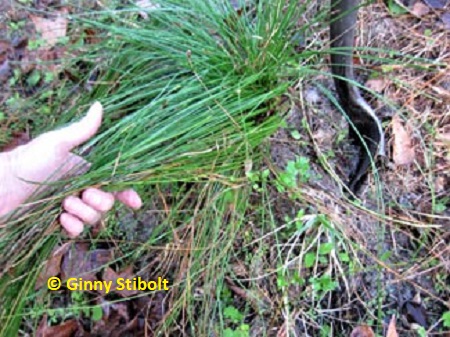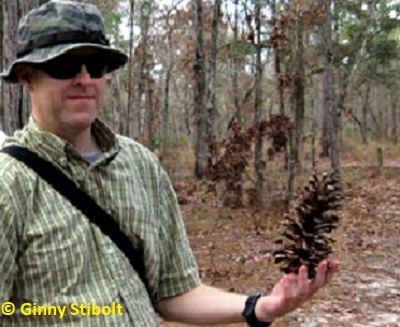Adventures of a Transplanted Gardener |
|||
Longleaf pines
|
|||
 |
<< Young longleaf pines can grow up to five feet a year to keep their tops, where new growth occurs, above passing ground fires. With no branches to ignite, a dense covering on its buds, and a thick-barked trunk, a tree this size might just lose its needles in a fire and then continue to grow soon after.
A longleaf pine forest that has experienced periodic ground fires will have a lovely park-like feeling with a wealth of interesting undergrowth that would be crowded out in a weedier environment. This environment is important for many species of Florida's wildlife including the endangered red cockaded woodpecker.
These pines are a good drought-tolerant choice for urban landscapes because of their fast growth and their narrow habit.
Also their deep root system provides more wind-resistance than other pines. If you have a sandy, sunny spot on your property, plant some of these interesting native pines.
 |
The grass stage of a longleaf pine growing on our septic drainfield. It's been growing for more than a year. I thought it was a grass or a rush. >>
How grassy is the grass stage?
What I realized after our Christmas walk is that a dark green grassy
plant, which had been growing on the side of our septic drainfield mound*
for more than a year, was a longleaf pine. Finding it there surprised
me because most of the pines in the immediate vicinity are sand pines
(P. clausa). I wasn't on the lookout for longleaf pines in my
yard and the grassy stage really did look like a grass or a rush. I
transplanted it to a sunny, sandy spot in the front meadow. I'm not
sure the transplant will take, because I didn't want to dig a deep hole
into the drainfield to get all of its roots, but we couldn't leave it
there.
I hope that while you are out in the yard working on gardening projects
that Mother Nature will provide you with some surprises, too. If she
does, let me know. Happy gardening in 2009!
Resources:
For more information on longleaf pines click these links:
https://www.nwf.org/Educational-Resources/Wildlife-Guide/Plants-and-Fungi/Longleaf-Pine.
*We have let the septic drainfield mound on the side of our back yard
become a meadow, but we remove all the trees that sprout because their
deep root systems will damage the drainfield. Since it's a drainfield,
it was built with sandy soil to achieve the best drainage. This is produces
a harsh, desert-like environment and the irrigation necessary to keep
turf grass healthy is excessive. The previous owner had planted the
mound with St Augustine turf grass that did not do well at all.
{Updaste: It did take a few years for that longleaf pine to recover from the transplant, but in 2020, it was more than ten feet tall.)
Ginny Stibolt is a life-long gardener, a botanist, a naturalist, and a garden writer. You may contact her or read more of her articles posted on her website: www.greengardeningmatters.com.
Copyright Ginny Stibolt


